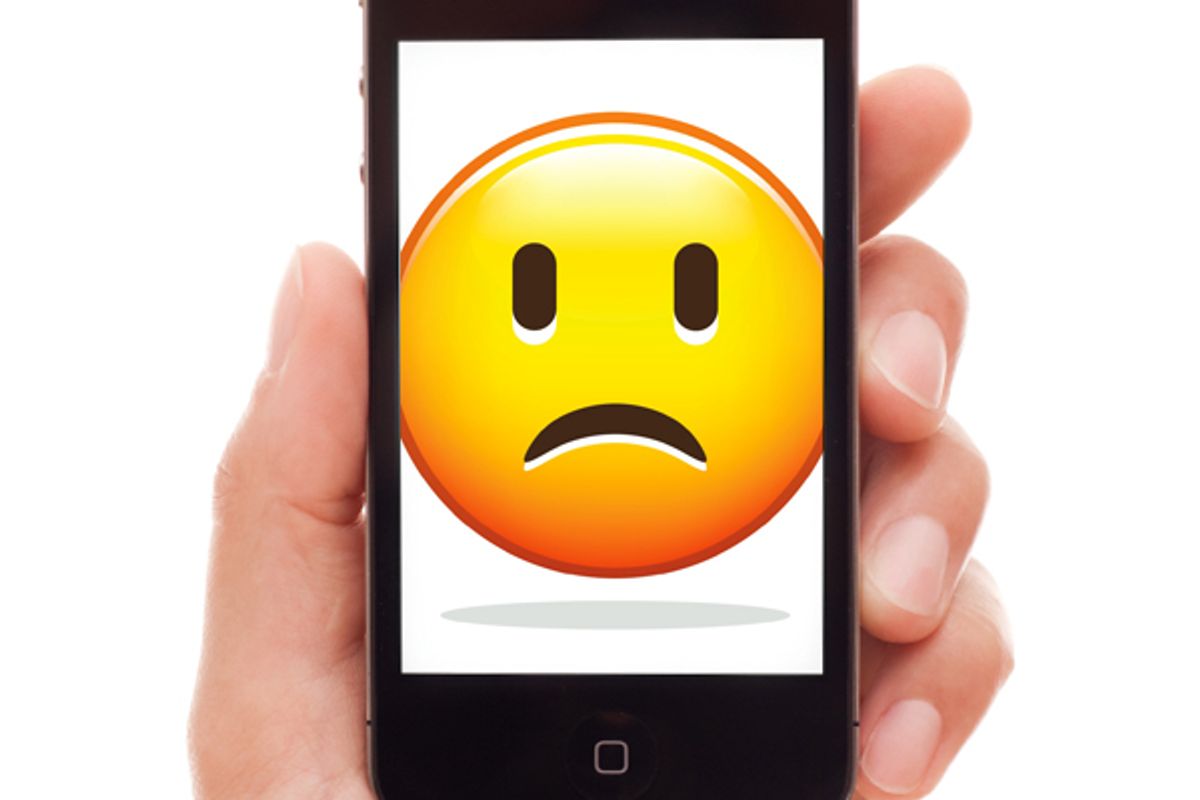Smartphones, like Swiss Army knives and SkyMall watches, have a few nifty features and plenty of useless ones. Who needs a checkbook when you’ve got Square, a toolkit when you’ve got iHandy Level, or a baby sitter when you’ve got Fruit Ninja? Encyclopedias, gazetteers, even boredom itself now seems obsolete.
Are dermatologists next? A slew of skin cancer-detection apps — with names like SkinVision, SpotCheck, and Mole Detective 2 — allow smartphone users to photograph and “analyze” their worrisome blemishes, offering diagnoses such as “problematic,” “high risk,” and “looks okay.” The free or low-cost apps base their findings on algorithms, rather than human expertise, and return results instantly. “Costs far less than an insurance copay, won’t leave a scar, and may save your life!” promises one advertisement. “The survival rate of melanoma is a dismal 15% at stage four,” warns another.
Anxious mole owners are sold. Breathes one reviewer, “Wow. Amazing. U can even save analysis and name mole to show dr or compare w next months photo.” (No app yet exists for turning text-speak into literate English.) “Have been worried about a spot on my dads face,” writes another. “Took a quick pic and got immediate feedback. Great idea, great results. Def recommended.”
Dermatologists are less than thrilled. In fact, they say, the apps are worthless. Writing in JAMA Dermatology, a team of physicians from the University of Pittsburgh put four melanoma apps to the test against 188 clinical images — pictures they’d taken of patients’ skin lesions and later determined, via biopsy, to be malignant or benign. How would a machine stack up against a board-certified dermatologist?
Not so well. Of the three auto-diagnosing apps, the best program missed malignant growths 30 percent of the time; a second performed only slightly better than flipping a coin.
One app, instead of using an algorithm, simply forwarded the photo to an accredited dermatologist, who responded with his considered opinion 24 hours later. At $5 per lesion, this was the most expensive program, though the e-doctor misdiagnosed just one in 53 melanomas.
Smartphones, the authors note, are becoming increasingly common in medicine; two-thirds of physicians use one in their practice. Health-conscious consumers, meanwhile, can choose among 13,000 wellness apps, from Alzheimer’s aids and blood sugar monitors to diet buddies and fertility calendars — a $718 billion market in 2011.
Cancer-spotting apps aren’t programmers’ first foray into dermatology. In 2011, the Federal Trade Commission sued into oblivion the makers of AcnePwner and AcneApp, both of which claimed to use blue and red light treatment to cure zits. (The latter went so far as to cite a study from the British Journal of Dermatology to support its claims.) Together, the apps were downloaded 15,000 times until the FTC forced their purveyors to cease and desist.
But then, teenagers will always be foolish and impulsive, quick to waste a buck on any passing fad. We adults should know better. A smartphone, it seems, does not a smart owner make.




Shares